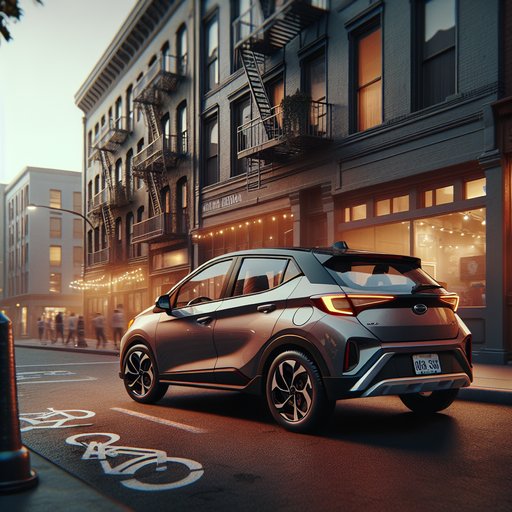
We spent a week using Toyota’s latest Corolla Hatchback as a downtown runabout to assess the real-world basics that matter in the city: parking ease, low-speed maneuverability, and stop‑start fuel economy.
The 2025 Toyota Corolla Hatchback is a compact five-door measuring 172.0 in long and 70.5 in wide on a 103.9-in wheelbase. Power comes from Toyota’s 2.0-liter M20A-FKS four-cylinder (169 hp, 151 lb-ft) driving the front wheels through a Direct-Shift CVT with a physical launch gear. Our SE test car (approx. 3,060 lb curb) rode on 205/55R16 tires; EPA economy is rated at 32/41/35 mpg (city/hwy/combined), and the turning circle is 34.8 ft.
A backup camera is standard; front/rear parking assist with automatic braking, blind-spot monitoring, and rear cross-traffic alert are available. Testing covered 186 city-only miles over seven days: school runs, courier-style errands, and two multi-level garages with tight 90-degree ramps and 7.0-ft clearance. Ambient temps ranged 52–78°F with A/C on Auto. We used regular 87-octane and logged data via GPS timing plus fill-to-fill fuel checks, cross-referencing the trip computer for route-level readings.
Parking performance is solid. The Corolla slotted into a 16-foot curbside gap with a single backing maneuver; short overhangs and that 34.8-ft turning circle help thread into tight spaces. Rear visibility is merely adequate—the small hatch glass and thick C-pillars impede diagonal sightlines—so the camera is essential. Image quality is crisp in daylight but gets grainy in dim garages.
Our car lacked a surround-view option; the available sonar with auto-brake is worth adding, as the front corners are otherwise hard to judge in nose-in stalls. Ground clearance (5.1 in) cleared tall speed humps without scraping. In traffic, the Corolla feels agile without being twitchy. Steering effort is very light below 10 mph and builds naturally, making alley entries and quick lane changes easy.
We completed a U-turn on a 34-ft residential circle with inches to spare and executed a three-point turn in a 19-ft alley with one reverse. Ride quality on 16-inch wheels is compliant over patched asphalt; square-edged potholes register as a thump but avoid harsh impact. The CVT’s launch gear gives clean, predictable pull-offs; our best 0–30 mph run was 3.9 seconds, enough for short gaps without drama. Fuel economy impressed for a non-hybrid.
On a representative 10-mile loop averaging 18 mph with 22 stops, the trip computer showed 35.6 mpg; fill-to-fill across the week returned 34.8 mpg, essentially matching the EPA city figure despite frequent cold starts. Throttle calibration is smooth, avoiding the surging some small turbos exhibit. Toyota Safety Sense 3.0’s adaptive cruise and lane tracing reduce fatigue on boulevard crawls; it follows down to low speeds, though after longer standstills it occasionally prompts the driver to resume. Overall, the Corolla Hatchback is an easy urban companion: compact footprint, cooperative steering, predictable controls, and low running costs.
Trade-offs include rear-quarter visibility, some tire roar on coarse pavement, and limited cargo height (17.8 cu ft). For city duty, the SE on 16-inch wheels with the parking sonar package is the sweet spot. If maximum stop‑start efficiency is the priority, the Corolla Hybrid sedan goes further; otherwise, this hatch’s balance of maneuverability and economy suits daily city life well.












